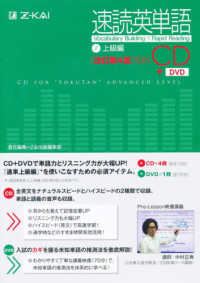- ホーム
- > 洋書
- > ドイツ書
- > Mathematics, Sciences & Technology
- > Technology
- > mechanical engineering & production engineering
Full Description
It highlights recent advances in designing nanostructured electrode materials, including various carbon-host materials, polymer-derived materials, binder-free sulfur-hosts, and metal oxides.








